With a pair of sexy MotoGP-like carbon winglets and the most powerful engine for a standard Superbike, the Aprilia RSV4 1100 Factory promises to be an absolute blast on a racetrack. ZA Bikers had the opportunity to go to the famous Mugello circuit in Italy, to find out more. Despite Aprilia not having a South African importer since the demise of Cayenne, we believe it is only a matter of time before a local entity snaps up this iconic brand.
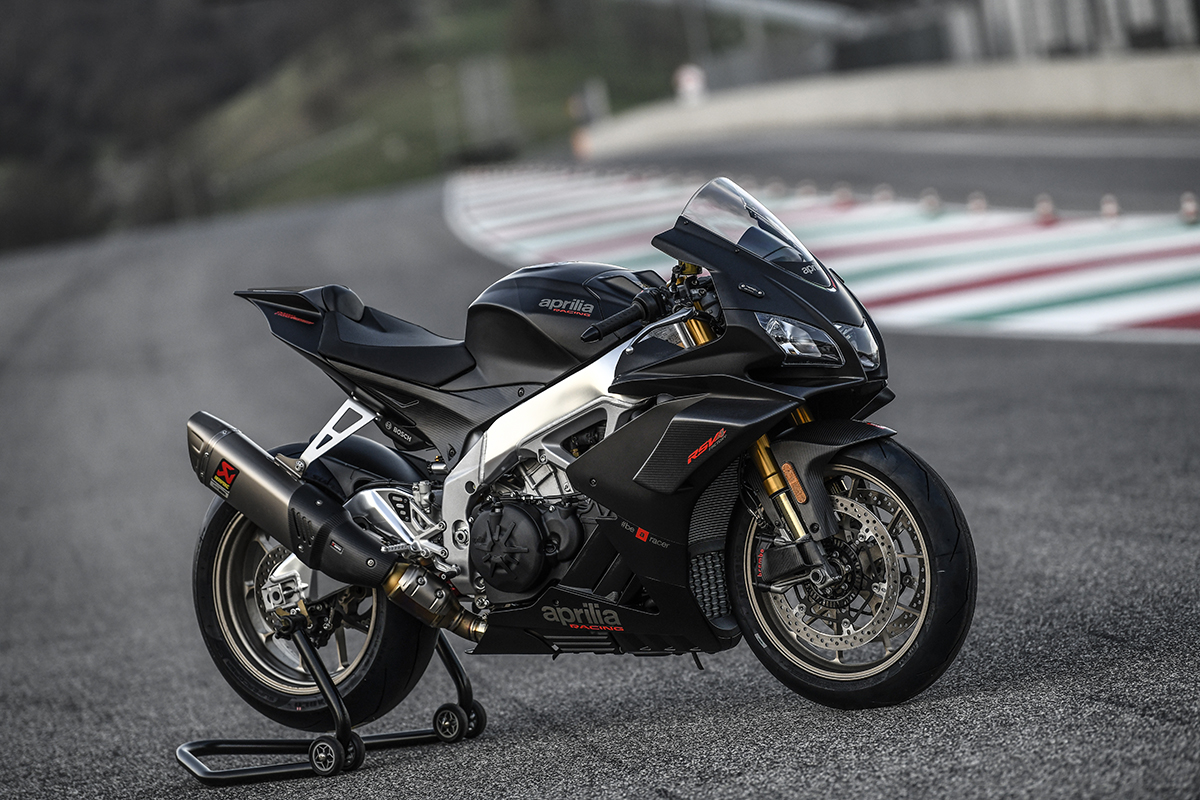
I am on the exit of the “Biondetti 2” corner, I’m full throttle, hooking fourth and I look down at the digital speedo for just a nanosecond, to read a bit over 200 km/h, which is truly amazing on such a short piece of straight. Here comes the last corner of the famous Mugello racetrack. Called “Bucine”, it’s a long left-hander with, what seems, the option to ride different lines. I delay my braking point, enter the corner mid-track and get my apex as late as I can, turn and get back on the power. Here comes the fun all over again. Full throttle in second gear, I change to third as I’m now on the exit coloured rumble strips.
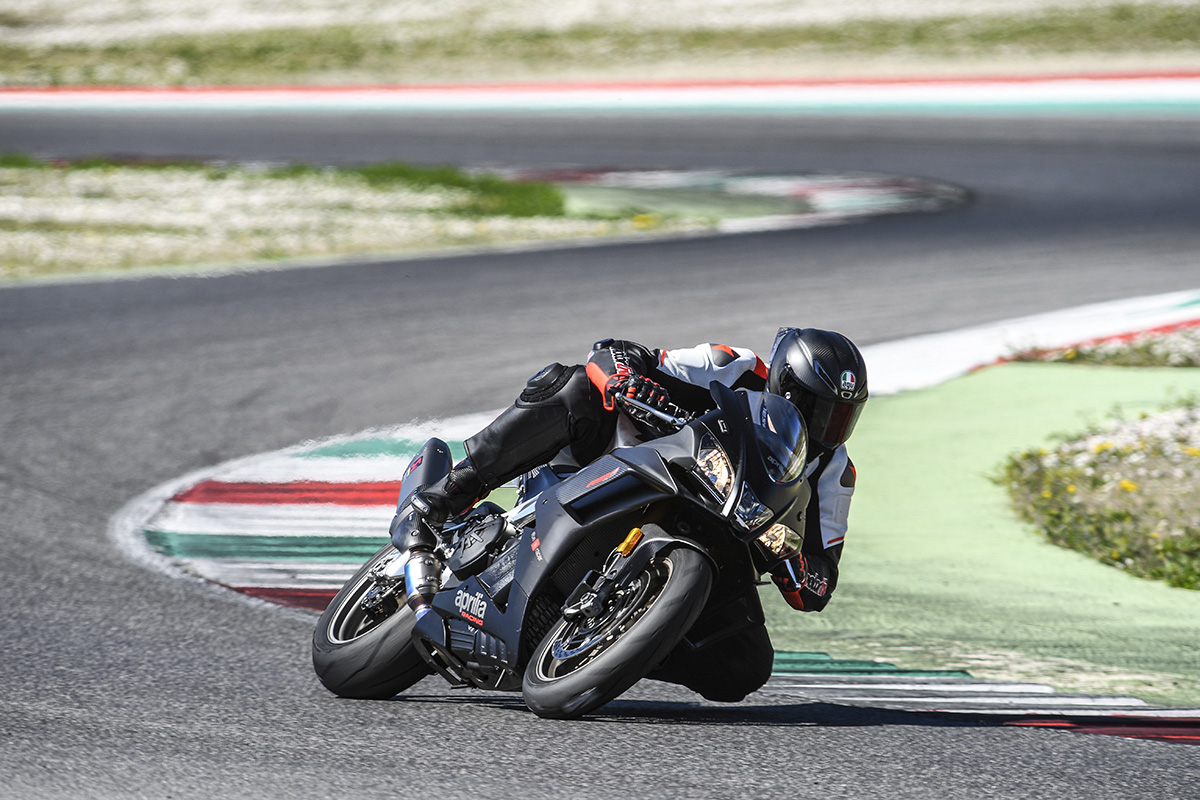
Third is good for 210 km/h. The RSV4 1100 Factory wants to wheelie as I go to fourth, but the AWC (Aprilia Wheelie Control) is set on 2 (of 3 positions) so it carries the front wheel just a couple of centimetres above the tar for a short time. No time to breath. Fourth gear pulls to 250 km/h. I gear up to fifth, then cross the “Italian flag” (red, green and white) stripes demarcating the pit lane exit, then go to sixth at more than 280 k/ph. The RSV4 still accelerates very strongly despite a small uphill, and the braking point is not yet visible, but I know that the “San Donato” right hand corner is just over the horizon. At this speed it will appear very, very quickly. All things considered, I feel amazingly relaxed and I’m having a lot of fun.
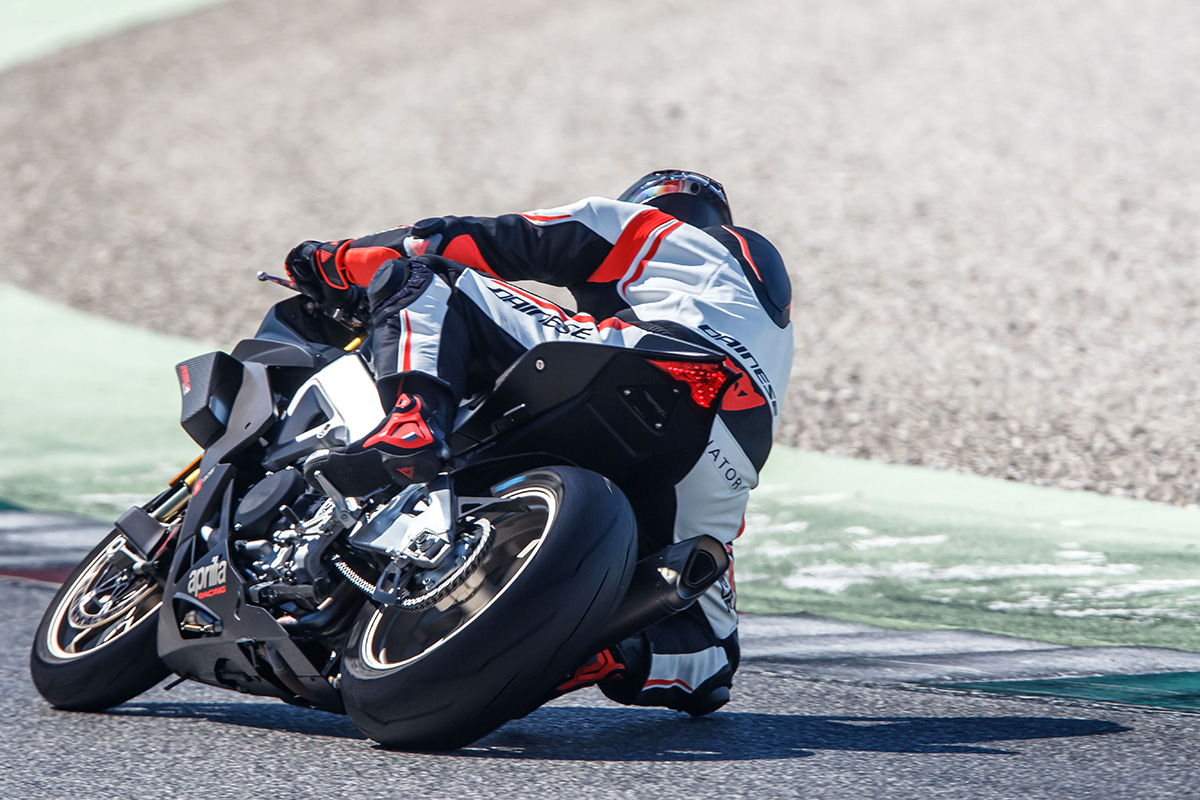
In less than half a minute, I managed to figure out a couple of the brand new Aprilia RSV4 Factory assets. First, whilst being extremely powerful with 217 hp @ 13200 rpm and 122 Nm of torque @ 11000 rpm, the V4 remains easier to ride when compared to the Ducati Panigale V4 S (214 hp @ 13500 rpm and 124 Nm @ 10000 rpm), which I also had a chance to test on another MotoGP racetrack last year. Power delivery is a tad smoother and, in “track” or “race” mode (the “race” is very similar to the track, except for a lighter engine braking), the electronics makes it easier to exit corners with the throttle pinned.
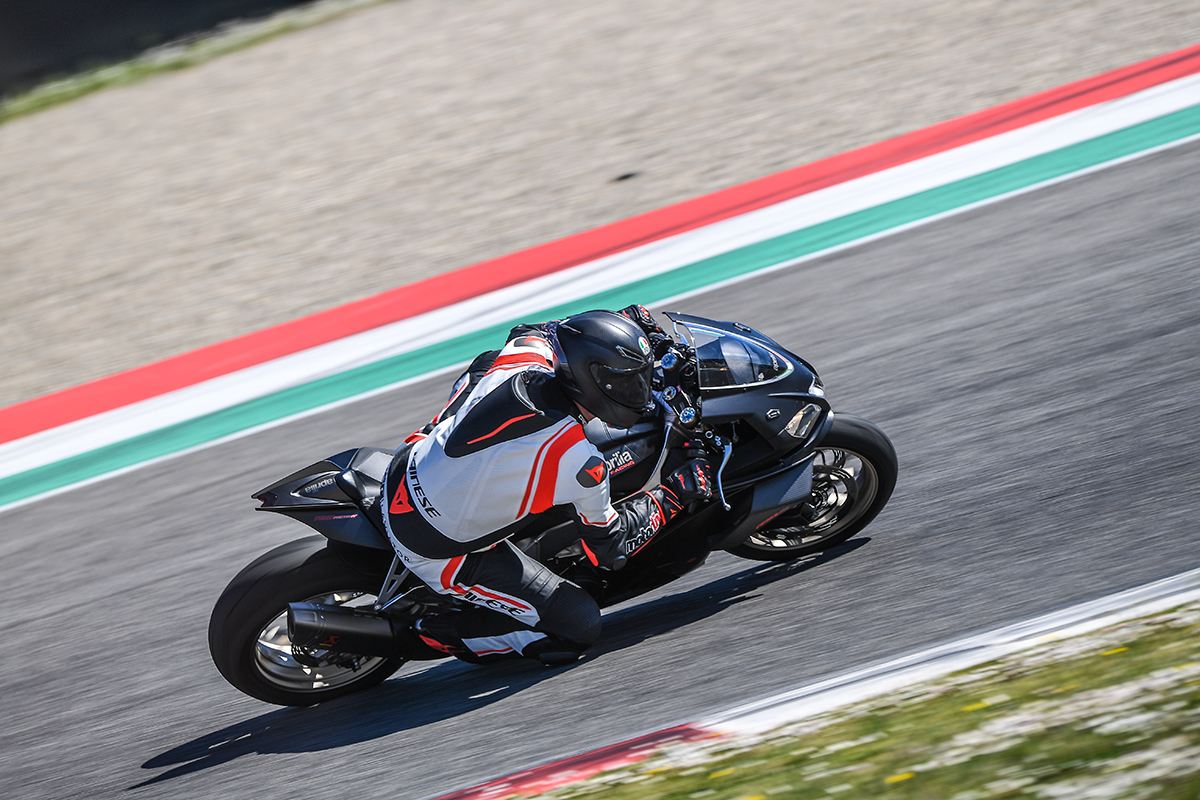
In addition to the magic electronics, when it comes to stopping power the brand new Brembo Stylema callipers are just perfect.
Now premium and blindingly fast…
Ducati was the first to open a new door by building an 1100 cc Superbike which is of course not eligible for World Superbike homologation, but the uber-expensive Panigale V4R is there for that. Aprilia has cleaned up its RSV4 range. Exit the 1000cc RF version; the RR is a really decent budget track tool and this brand new 1100 Factory is dedicated to those really discerning riders with some exquisite taste.
As it’s not eligible for racing, Aprilia wants the RSV4 1100 Factory to deliver a premium feel. I need to mention once again the MotoGP-like carbon winglets as they look absolutely stunning and the bike is dripping with carbon and titanium parts.
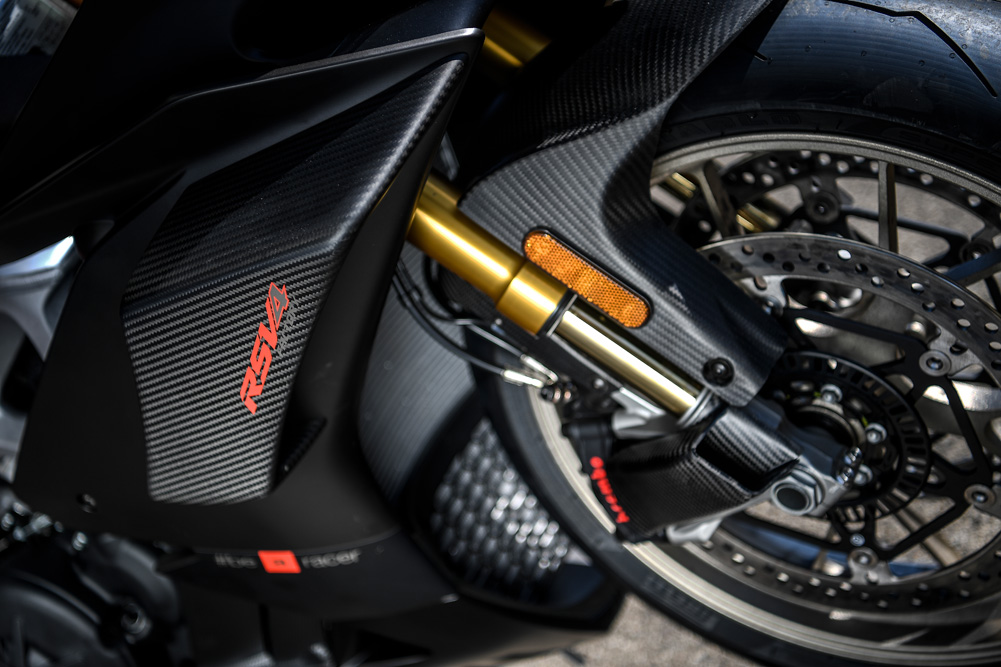
Winglets are supposed to enhance stability during high speed acceleration and also during high speed braking. The braking composure was superb, but I could notice a bit of movement over 280 km/h, but I’m also a fairly tall rider…
The TFT dash has been upgraded, it’s now brighter with more contrast. There is only one colour scheme, though: it’s black. Actually, it’s called “Atomico 6”, because the 6th atom is the one for carbon. I like it when poetry mixes with 217 hp!
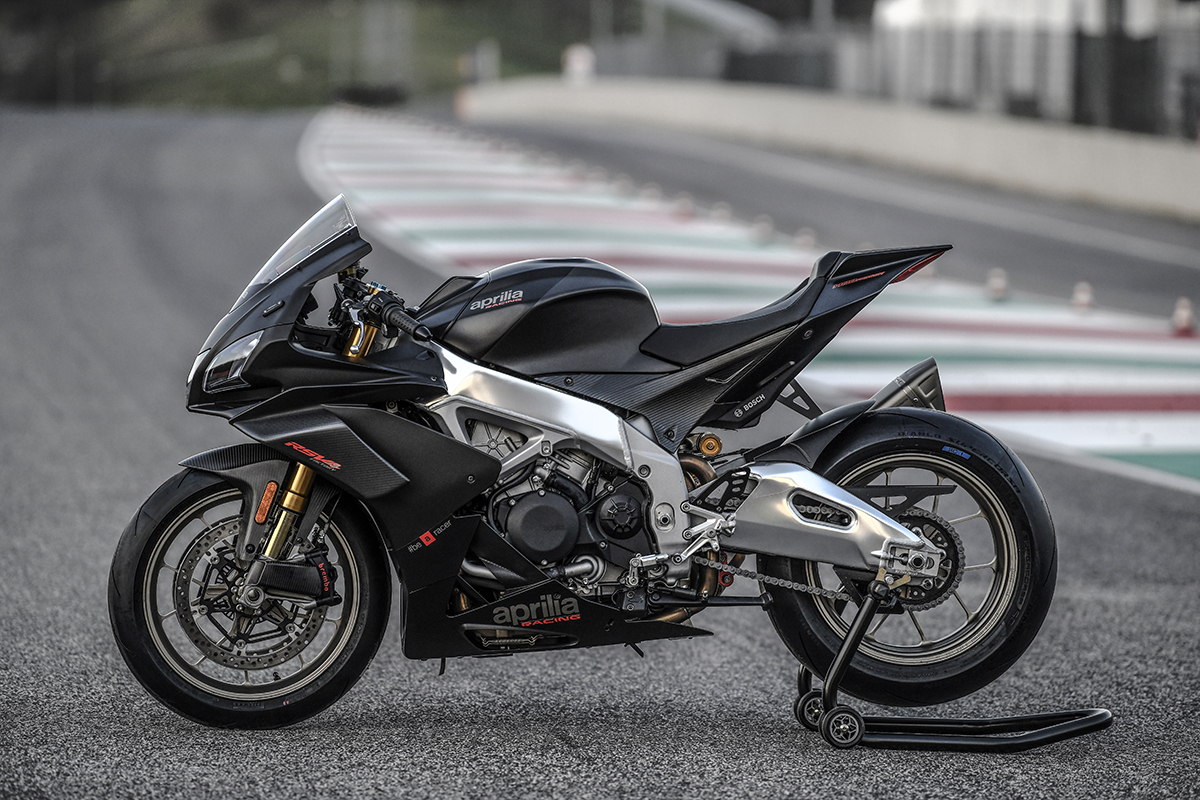
Power is nothing without control
The engine has the same capacity, bore and stroke as the naked Tuono 1100, however, you don’t get an extra 40 hp with just new mapping and a bit of luck. So the pistons are new, the compression ratio is higher, the mapping is indeed different, as is the inlet valve timing, and a brand new Akrapovic exhaust, fitted as standard, also contributes to the new power and torque figures. With that much power and torque, the gear ratios provide a longer 5th and 6th gears, and the up & down gear shifter comes as standard. (it worked perfectly well during all our sessions, and the down-shift from 6th to 2nd at the end of the pit straight is just a peach).
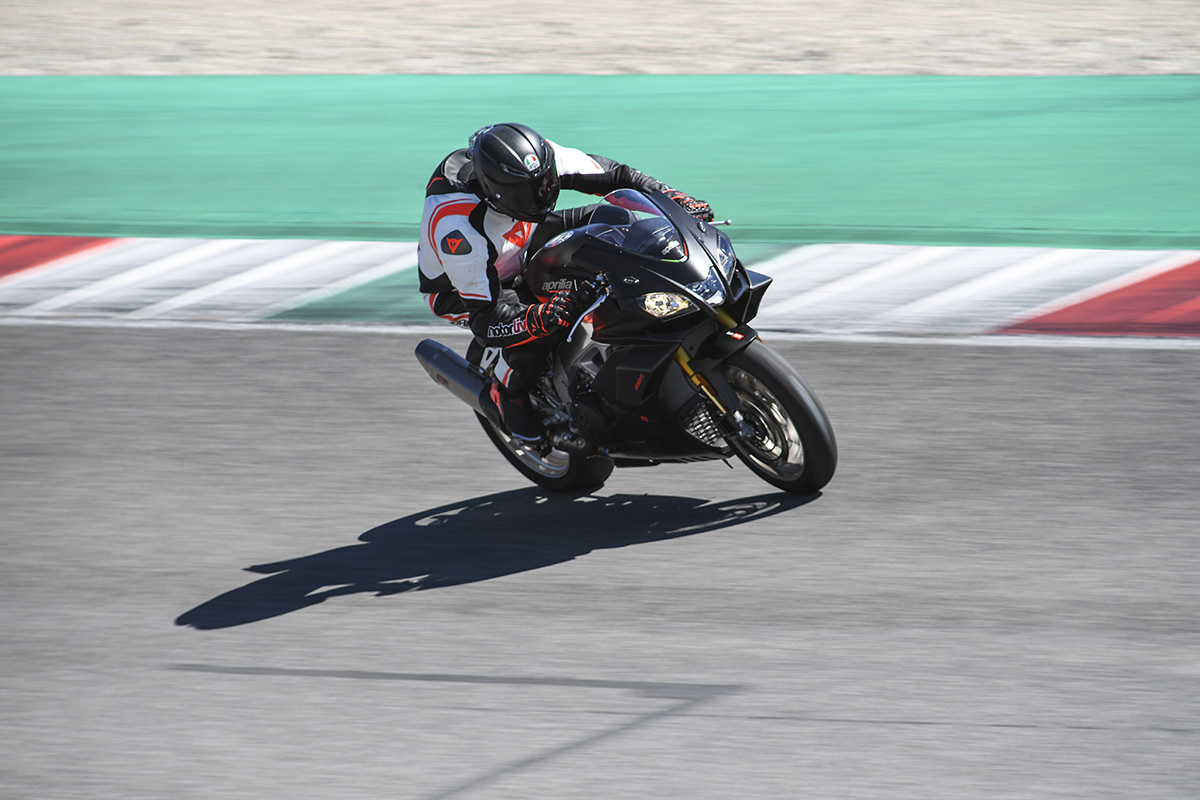
The already perfect APRC (Aprilia Performance Riding Control) has been redesigned to cope with the extra level of performance. The ergonomics are perfect: the left-hand switch-cube helps to navigate through the different menus, and both the traction control and wheelie control set-ups can be changed whilst riding, as can the riding mode. There are also two speed limiters, one for the pit lane and cruise control for the open road. There are also some minor changes in the frame geometry, to make the bike even more agile (and remember, the RSV4 is still the only Superbike on which you can adjust your own geometry, with the steering head angle and the engine position that can be fettled to your own taste). The 1100 Factory also features the best of Öhlins components, a NIX30 fork (with travel specially upgraded to 125 mm to fulfil Aprilia specifications, as the NIX30 is usually good for 120 mm, paired with a TTX36 shock at the back).
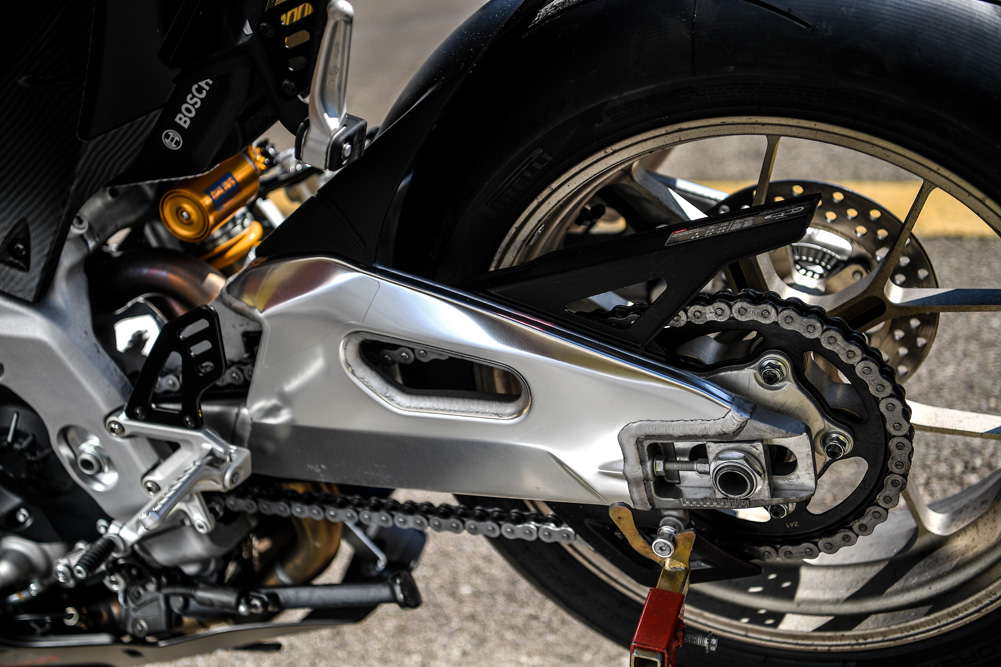
As mentioned, the brakes are now Brembo Stylema, lighter and more rigid than the previous system, and Aprilia offer some optional carbon funnels that helps to reduce the heat by 20 %. The weight savings are such that the whole system is lighter than the previous one, funnels included. The bike’s overall weight has been reduced by 5 kilos, with the RSV4 1100 Factory weighing in at a mere 199 kilos. That makes a great power to weight ratio, indeed!
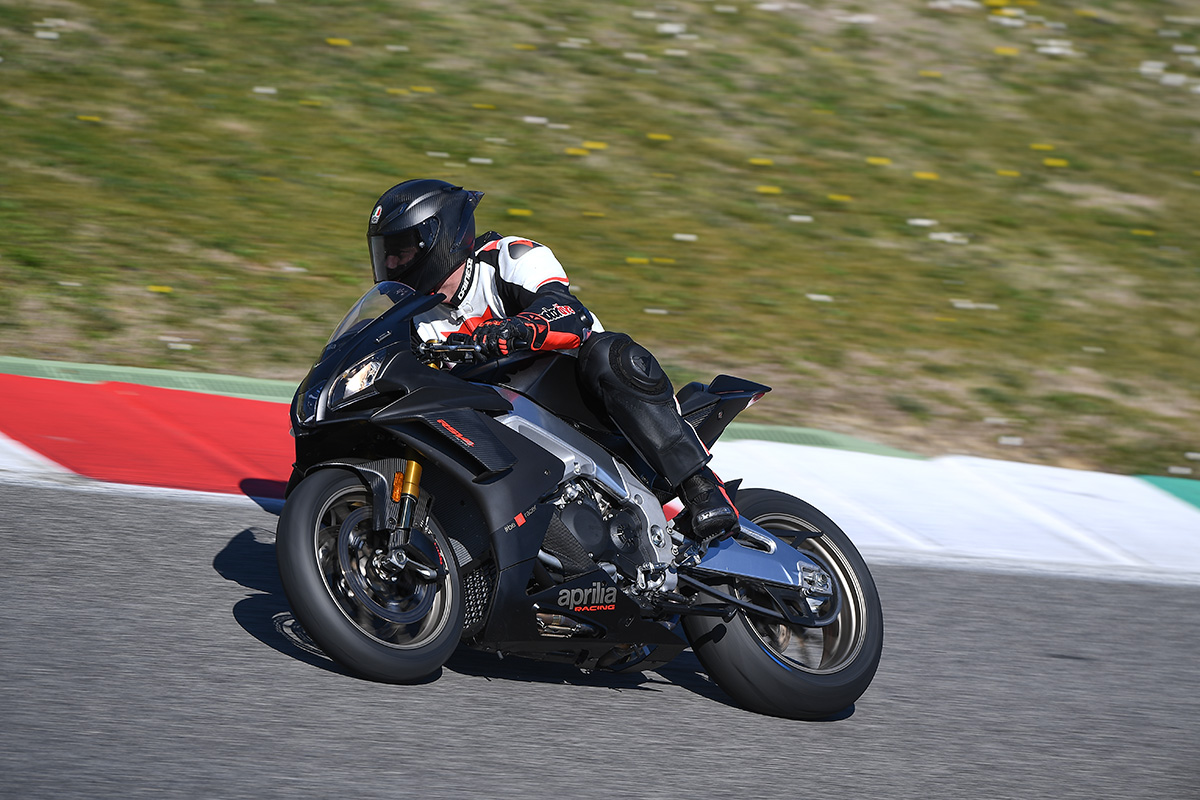
More good news is the price tag, which is, obviously on the expensive side, but actually not that much if you consider that in Europe, the RSV4 1100 Factory has for competition the Ducati Panigale V4 standard (without the Öhlins shocks), and the Panigale V4 S is 5000 € (R 85 000) more expensive.
Fun for everybody
Since 2009, I’ve always considered the RSV4 to be my favourite Superbike. It always gave me the feeling of riding a CBR 600 with the power of a Hayabusa. The RSV4 has managed to get better year after year, getting improved ABS, a new TFT dashboard, and has become Euro-4 compliant. With the 1100 Factory, the RSV4 has never been so good.
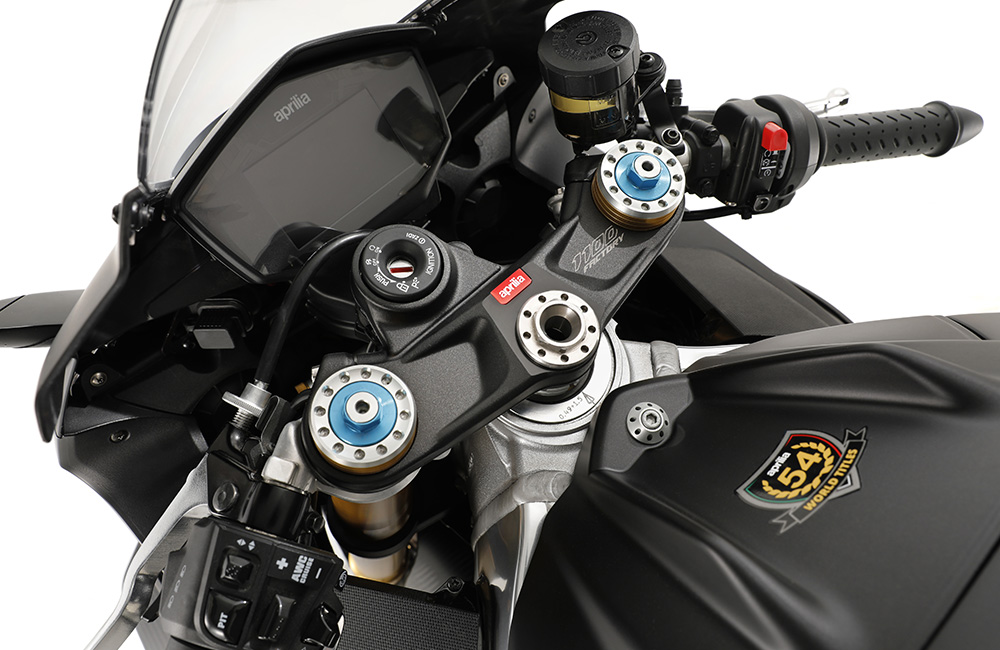
The magic thing with the modern era Superbikes is definitely the electronics. From the first sighting lap to the end of the last session, once you’ve warmed up yourself and got more accustomed to the bike and the track, the RSV4 makes itself fairly easier to ride. Although, that said, the power delivery generates a bit of movement from the suspension when exiting low speed corners. I could only say with certainty after riding them back to back, but I suspect that the Panigale V4’s front end is a bit more agile, however the Aprilia’s power delivery and overall balance appeared to be easier to control. The fact is for me, after all the sessions, the test ride was physically less demanding on the Aprilia than on the Ducati…
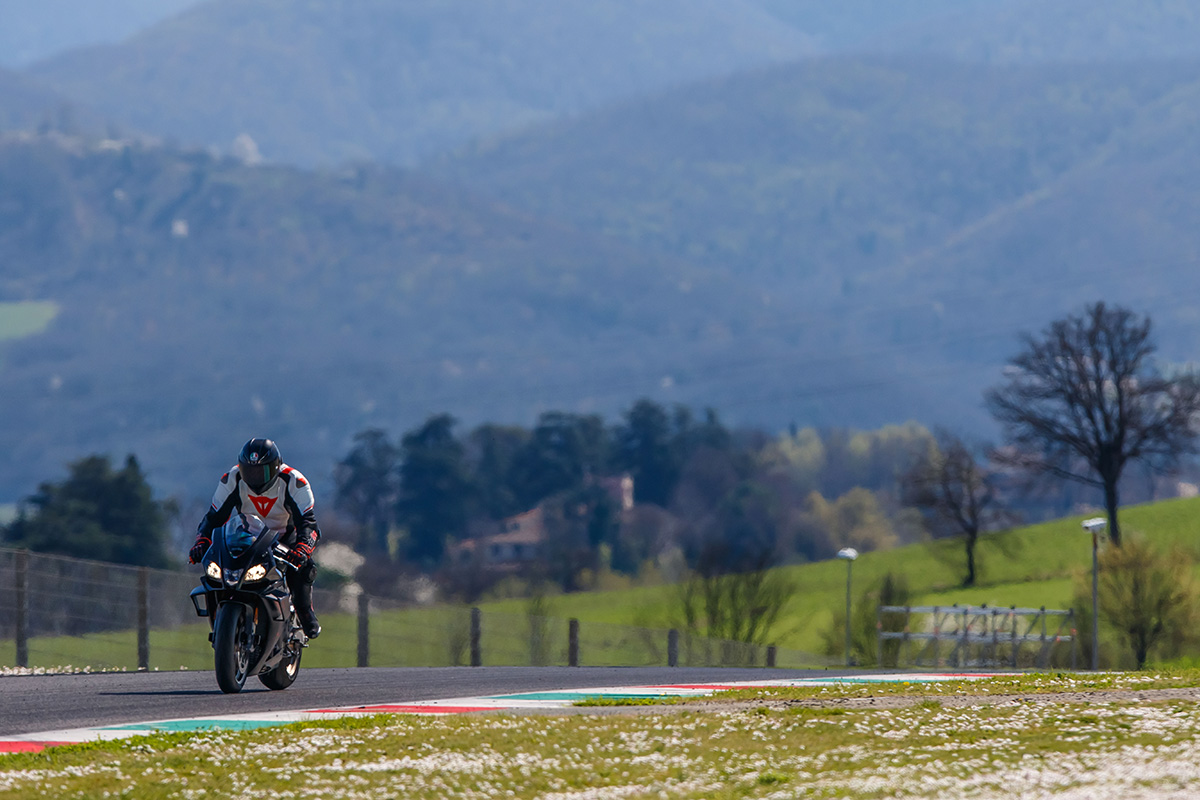
If he could have ridden a RSV4 1100 Factory, Max Biaggi reckons he would have been able to get another SBK World title in 2011. Enough said.




